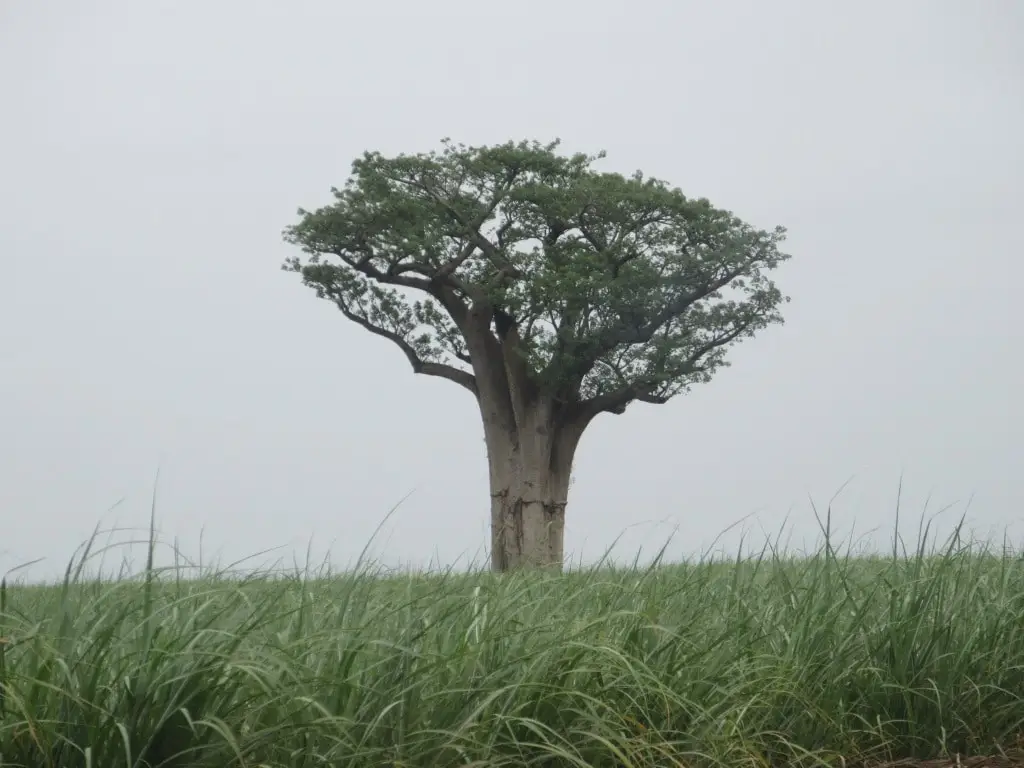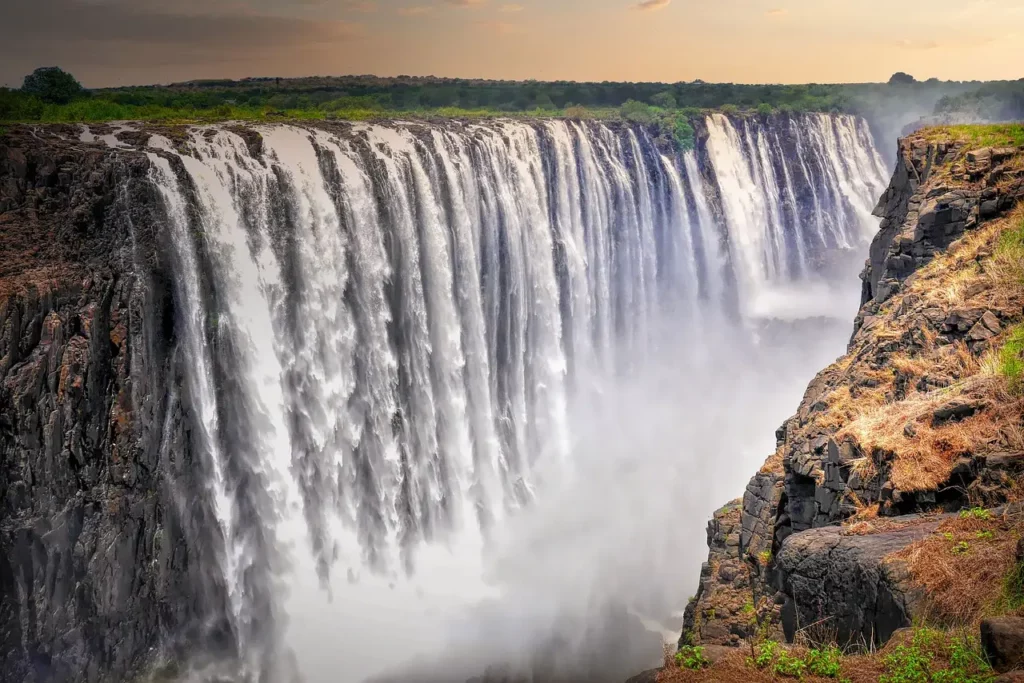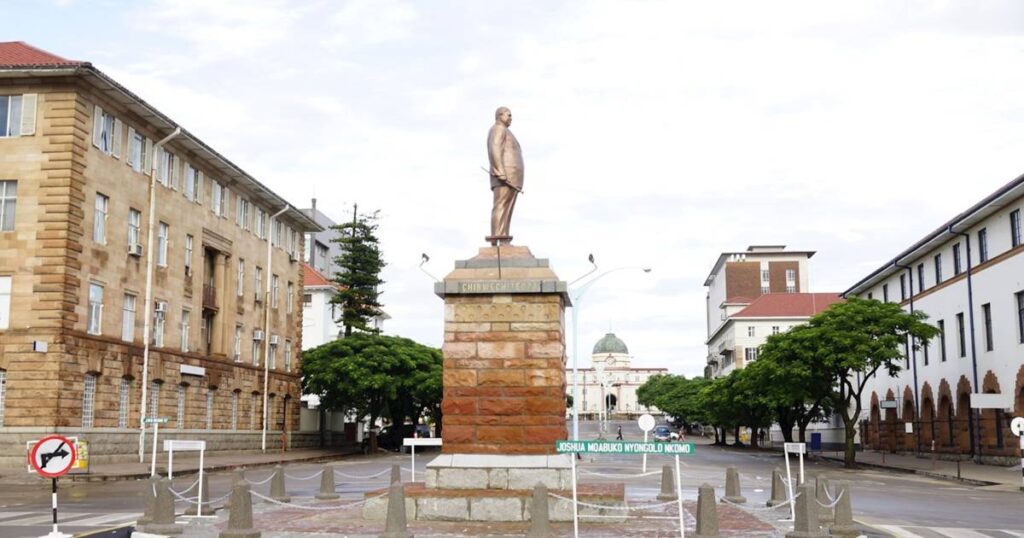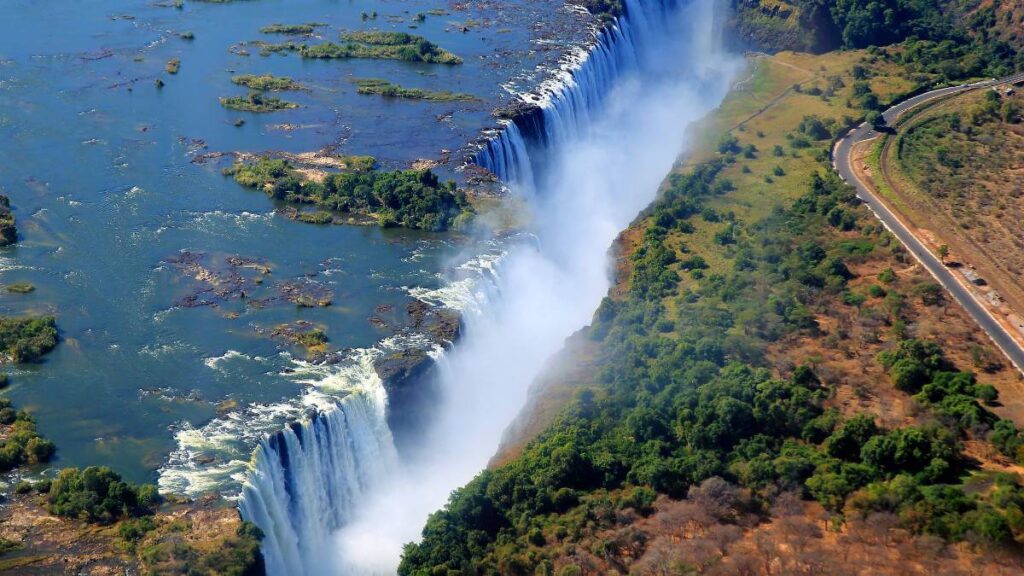Zimbabwe, a landlocked nation in Southern Africa, boasts a rich and diverse natural heritage. Among its remarkable features are its numerous dams and reservoirs, which provide essential water resources, electricity, irrigation, and recreational opportunities. With over 10,000 dams covering approximately 117,662 hectares, Zimbabwe stands out as a country that harnesses water resources for development and sustainability. Some of these dams rank among the largest and most impressive in Africa and even the world. This article highlights the top 10 largest dams in Zimbabwe based on their water storage capacity.
1. Kariba Dam

Kariba Dam, located on the Zambezi River, is not only the largest dam in Zimbabwe but also one of the largest in the world. Constructed between 1955 and 1959, it is a monumental example of cooperation between Zimbabwe and Zambia.
- Type: Double-curvature concrete arch dam
- Height: 128 metres
- Length: 579 metres
- Reservoir: Lake Kariba, the largest artificial lake in the world by volume (280 km long, holding 185 cubic kilometres of water)
- Uses: Hydroelectric power generation (1,626 MW shared by Zimbabwe and Zambia), fishing, tourism, and wildlife conservation.
2. Tugwi Mukosi Dam

Tugwi-Mukosi Dam, also known as Tokwe-Mukosi Dam, is Zimbabwe’s largest inland dam, located in Masvingo Province.
- Type: Concrete-face rock-fill dam
- Height: 90.3 metres
- Length: 1,287 metres
- Reservoir Capacity: 1.75 cubic kilometres
- Uses: Irrigation, domestic water supply, tourism, and future hydroelectric power generation (12 MW potential).
- Construction: Completed in 2017 after years of delays.
3. Lake Mutirikwi

Previously known as Lake Kyle, Lake Mutirikwi is one of Zimbabwe’s oldest and most significant dams, situated in Masvingo Province.
- Type: Earth-fill embankment dam
- Height: 54 metres
- Length: 1,616 metres
- Reservoir Capacity: 1.425 cubic kilometres
- Uses: Irrigation, domestic water supply, fishing, and tourism.
- Surroundings: Kyle Recreational Park, home to various wildlife species.
- Construction: Built between 1958 and 1961.
4. Lake Manyame
Lake Manyame, also known as Darwendale Dam, serves as a major water source for Harare, Zimbabwe’s capital city.
- Type: Earth-fill embankment dam with a concrete spillway
- Height: 43 metres
- Length: 1,200 metres
- Reservoir Capacity: 490 million cubic metres
- Uses: Domestic water supply, irrigation, fishing, and tourism.
- Construction: Completed between 1972 and 1976.
5. Osborne Dam
Nestled in Manicaland Province, Osborne Dam is celebrated for its scenic beauty and importance to rural development.
- Type: Earth-fill embankment dam with a concrete spillway
- Height: 64 metres
- Length: 1,100 metres
- Reservoir Capacity: 400 million cubic metres
- Uses: Irrigation, domestic water supply, fishing, and tourism.
- Construction: Completed between 1990 and 1994.
6. Mazvikadei Dam
Mazvikadei Dam is a popular recreational spot located in Mashonaland West Province.
- Type: Earth-fill embankment dam with a concrete spillway
- Height: 48 metres
- Length: 1,000 metres
- Reservoir Capacity: 360 million cubic metres
- Uses: Domestic water supply, irrigation, fishing, and tourism.
- Construction: Completed between 1984 and 1988.
7. Manyuchi Dam
Located in the remote Masvingo Province, Manyuchi Dam plays a vital role in water supply and irrigation.
- Type: Earth-fill embankment dam with a concrete spillway
- Height: 35 metres
- Length: 1,000 metres
- Reservoir Capacity: 303 million cubic metres
- Uses: Domestic water supply, irrigation, fishing, and tourism.
- Construction: Built in 1974.
8. Manjirenji Dam
Manjirenji Dam, located in Masvingo Province, is vital for Zimbabwe’s sugar industry.
- Type: Earth-fill embankment dam with a concrete spillway
- Height: 40 metres
- Length: 1,000 metres
- Reservoir Capacity: 285 million cubic metres
- Uses: Irrigation, domestic water supply, fishing, and tourism.
- Construction: Completed between 1964 and 1966 as part of the Hippo Valley Estates irrigation scheme.
9. Lake Chivero
Lake Chivero, previously known as Lake McIlwaine, is a critical water source for Harare but is currently one of Zimbabwe’s most polluted dams.
- Type: Earth-fill embankment dam with a concrete spillway
- Height: 26 metres
- Length: 400 metres
- Reservoir Capacity: 250 million cubic metres
- Uses: Domestic water supply, irrigation, fishing, and tourism.
- Construction: Completed between 1950 and 1952.
10. Mayfair Dam
Mayfair Dam, located in Matabeleland South Province, is one of Zimbabwe’s newest major dams.
- Type: Earth-fill embankment dam with a concrete spillway
- Height: 30 metres
- Length: 400 metres
- Reservoir Capacity: 182 million cubic metres
- Uses: Domestic water supply, irrigation, fishing, and tourism.
- Construction: Completed between 1972 and 1976 to serve Bulawayo.
Conclusion
These top 10 largest dams in Zimbabwe are not only critical for the country’s water security, economic development, and energy production but also add to its natural beauty and cultural heritage. They are engineering marvels that attract visitors and contribute significantly to tourism, agriculture, and local livelihoods. Whether you are an adventurer, nature lover, or engineering enthusiast, these dams are worth exploring.
Do you have a favourite dam in Zimbabwe? Share your thoughts in the comments below!



